3.1 Genetic diversity is essential to the evolution and survival of populations
3.1–

species A group of interbreeding, or potentially interbreeding, populations, reproductively isolated from other populations.
populations All the individuals of a species that inhabit a particular place at the same time.
endangered species A species whose populations have become so small that they may become extinct in the near future.
population ecology Branch of ecology that is concerned with the factors influencing the structure and dynamics of populations, including population size, distribution, and growth.
62
To understand the goals of conservation, we need to take a step back and understand what it is we are conserving. What is it that makes a wolf a wolf? Biologists define a species as a group of interbreeding, or potentially interbreeding, populations that are reproductively isolated from other populations. For example, the gray wolf, Canis lupus, is a widely distributed species with populations across the Northern Hemisphere from western Europe through eastern Canada. The species is made up of many populations, which are defined as all the individuals of a species that inhabit a particular place at the same time. Those 31 new wolves in Yellowstone became the founding members of a new population. Any attempt to restore or conserve an endangered species, one whose populations have become so small that they may become extinct in the near future, draws on the branch of ecology called population ecology. Population ecology is concerned with the factors influencing the structure and dynamics of populations, including population size, distribution, and growth.
genetic diversity The sum of the different genes and gene combinations found within a single population of a species and across populations of the same species.
genes Stretches of DNA that direct the growth, development, and functioning of organisms.
The genetic diversity of populations is critical to conservation. Mexican gray wolves living in the mountains of southern Arizona and New Mexico represent a regional population that is genetically distinct from the wolves in Yellowstone. These genetic differences contribute to the overall genetic diversity of gray wolves worldwide. We define genetic diversity as the sum of the different genes and gene combinations found within a single population of a species, as well as across populations of the same species. Genes are stretches of DNA that direct the growth, development, and functioning of organisms (Figure 3.1). For example, some genes code for proteins that function as structural molecules, making up tendons or ligaments, whereas proteins, called enzymes, facilitate specific chemical reactions. For instance, the enzyme lactase speeds up the digestion of the lactose sugar in milk.
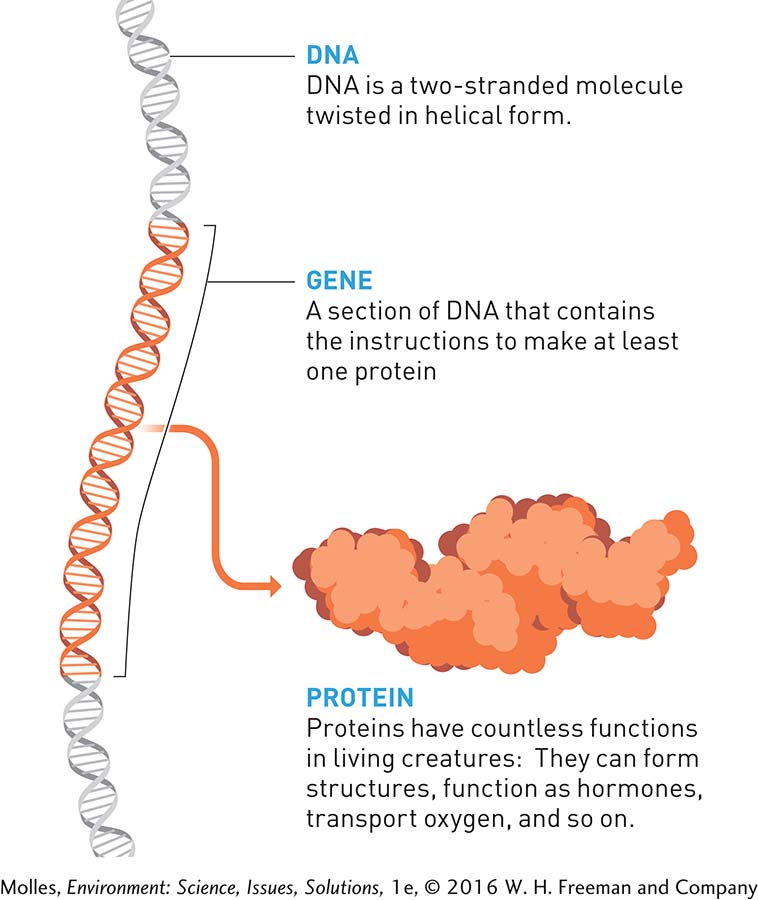
We can see abundant evidence of genetic diversity in facial differences among individual people. These differences allow us to instantly recognize friends and acquaintances in a crowd. Such facial variation can also be seen in the facial markings of Mexican gray wolves (Figure 3.2). However, most genetic variation—
63
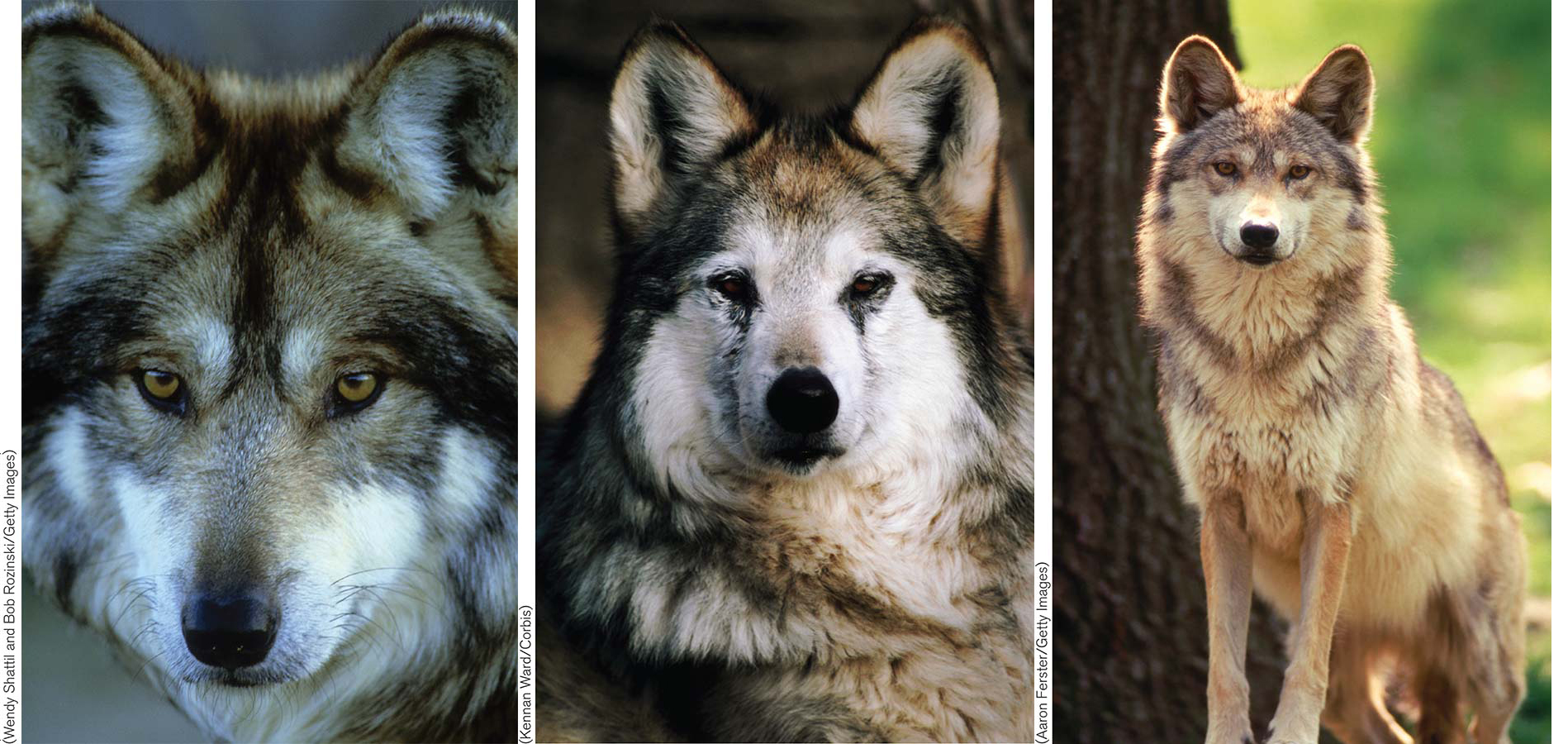
Conservation biologists have demonstrated that genetic variation, or genetic diversity, increases the probability that populations will survive in the face of environmental challenges. Consider, for example, genetic variation in the maximum temperature a fish can withstand without dying, called lethal maximum temperature. As Figure 3.3 shows, a population with low genetic variation may not include any individuals capable of surviving temperatures reached during an unusual heat wave. As a result, the population dies out entirely. Meanwhile, some individuals in another population with higher genetic variation do survive. Genetic diversity not only helps ensure survival in the face of environmental challenges, but it also enables a population to change and adapt to new environmental circumstances—
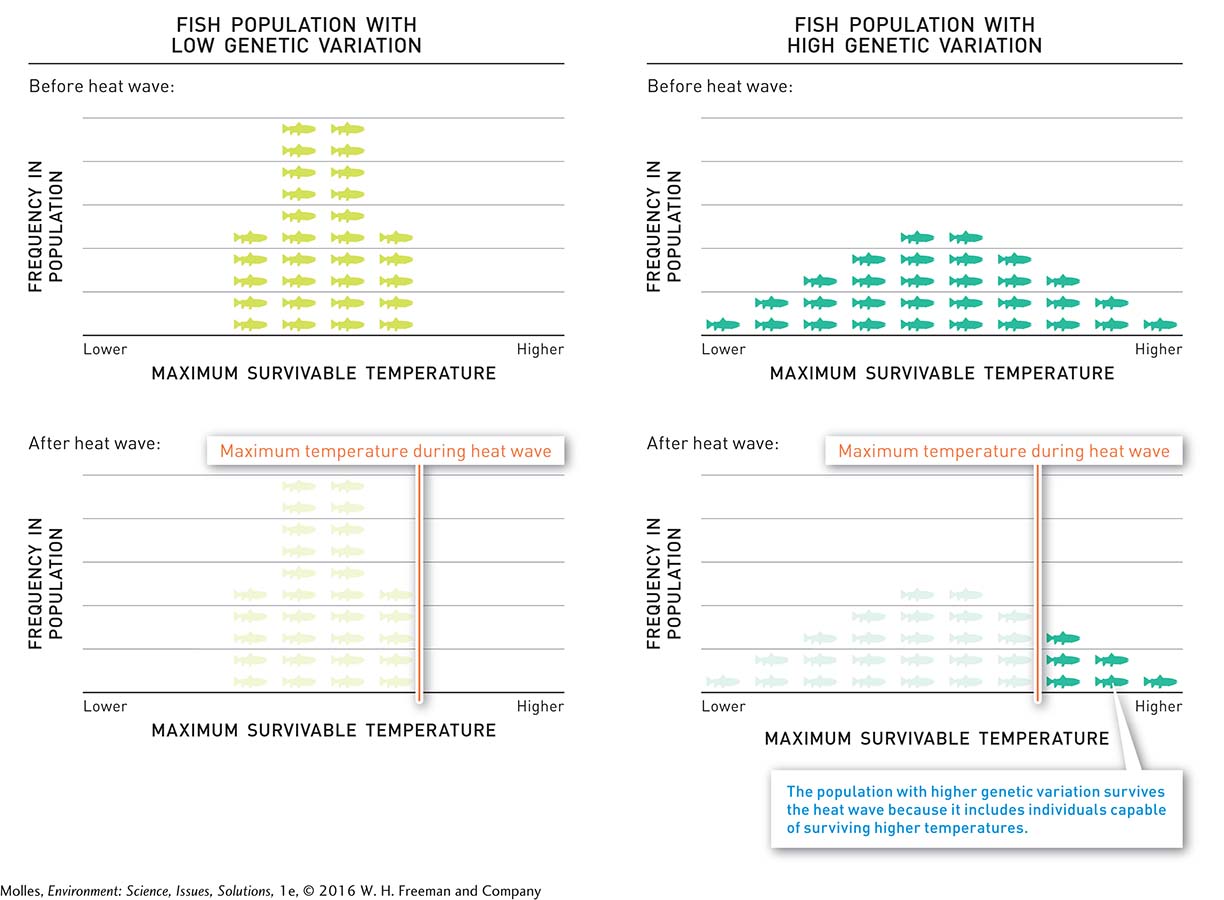
Genetic Diversity and Selective Breeding
domestication The deliberate change of a wild animal or plant population through selective breeding to better meet the needs of humans.
Genetic diversity has been crucial to domestication, the deliberate change of a wild animal or plant species to better meet the needs of humans. Humans have produced the many existing varieties of food crops and beautiful flowering plants and animal breeds, such as dairy cows and racehorses, by selectively breeding certain individuals within an ancestral wild population. The individuals chosen for breeding during domestication were those that possessed certain desired characteristics, such as the ability to produce large amounts of milk or the ability to run fast.
artificial selection A process in which humans “select” which individuals in a population mate to produce descendants with desired characteristics.
Domestic dogs descended from wolves, and their breeds have been refined for particular abilities, such as herding livestock, hunting game, or guarding property. The Border collie, for instance, is a specialist at herding sheep (Figure 3.4). Over generations, shepherds have kept and bred only those Border collies with characteristics helpful in controlling flocks of sheep without injuring them, including some of the hunting behaviors of its wolf ancestors like stalking, chasing, and staring down a prey animal. Meanwhile, a Border collie that shows behaviors associated with immobilizing and killing prey—
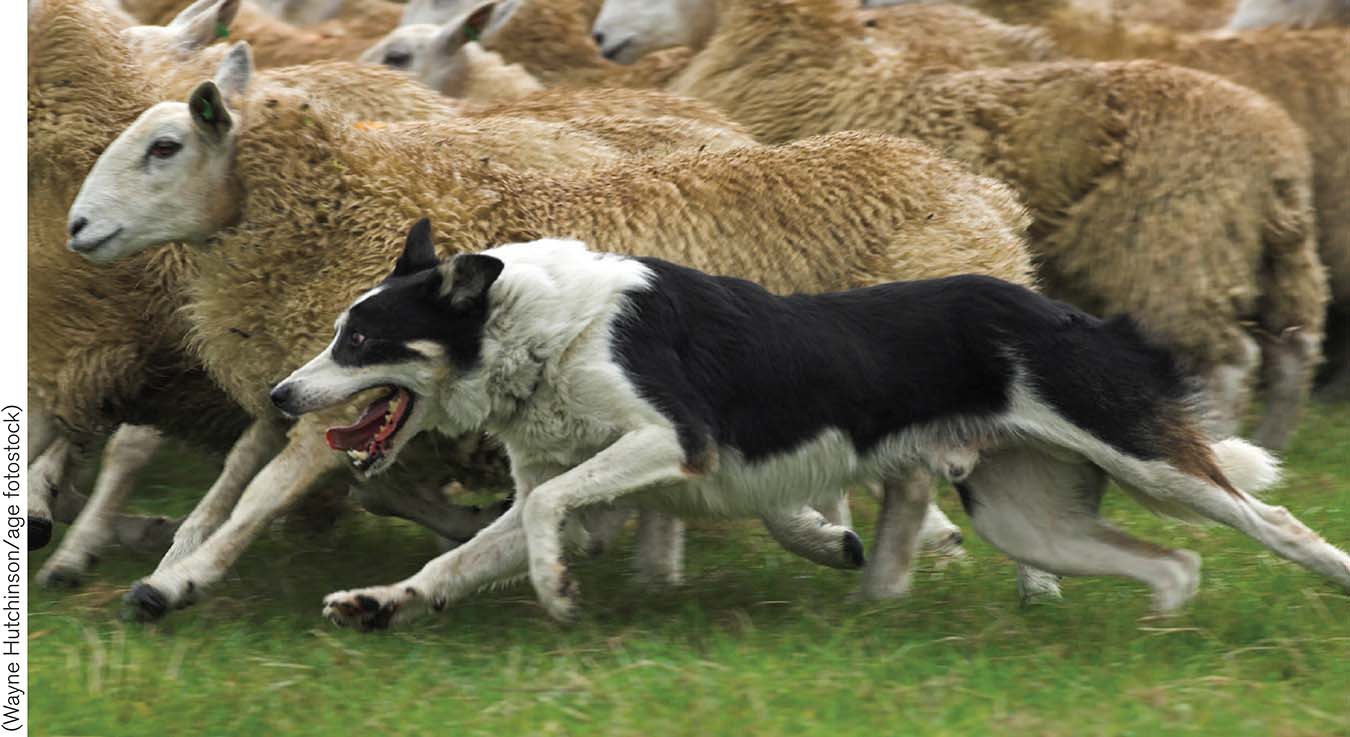
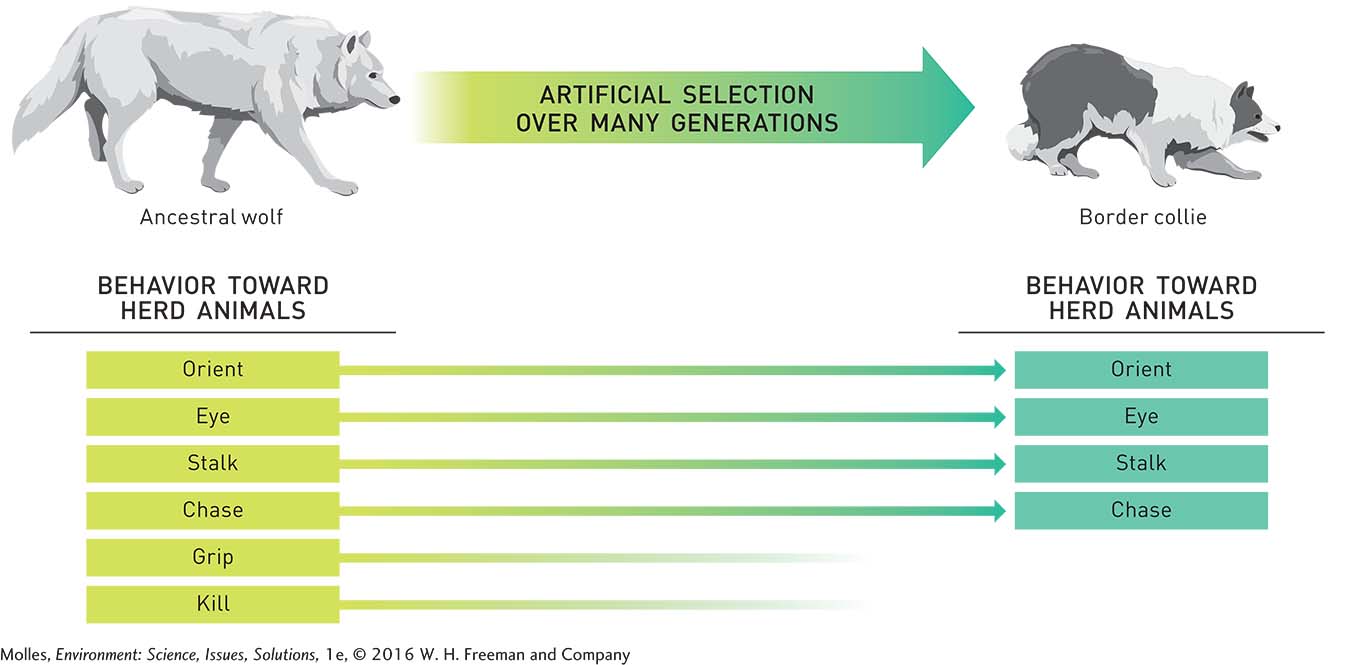
64
In the plant world, sunflowers are grown worldwide as a source of oil and seeds. The wild ancestor of the domestic sunflower, Helianthus annuus, is native to North America, where it was domesticated and grown as a crop by Native Americans more than 4,000 years ago. Native Americans, and later Russian plant breeders, selectively bred the sunflowers that had the largest seeds and inflorescences (a tight cluster of small flowers) with other sunflowers that had large inflorescences and seeds. Over time, this resulted in a plant with a giant flowering head, bearing large seeds (Figure 3.6).

Genetic Diversity and Natural Selection
natural selection A process of interaction between organisms and their environment that results in different rates of reproduction by individuals in the population with different physical, behavioral, or physiological characteristics; can change the relative frequencies of particular genes in the population—
Charles Darwin, the famed 19th-
65

Why are conservation biologists working to conserve populations of rare varieties of domestic plants and breeds of domestic livestock?
A vivid example of how natural selection works can be found in the American chestnut trees that once grew in abundance in the forests of eastern North America. Individual chestnut trees grew to heights of over 30 meters (100 feet) with trunk diameters of 1 to 2 meters (3 to 6 feet) (Figure 3.7). Then around 1900, the blight fungus (Cryphonectria parasitica) arrived in North America, carried by imported Asian chestnut trees, which were resistant to the fungus.
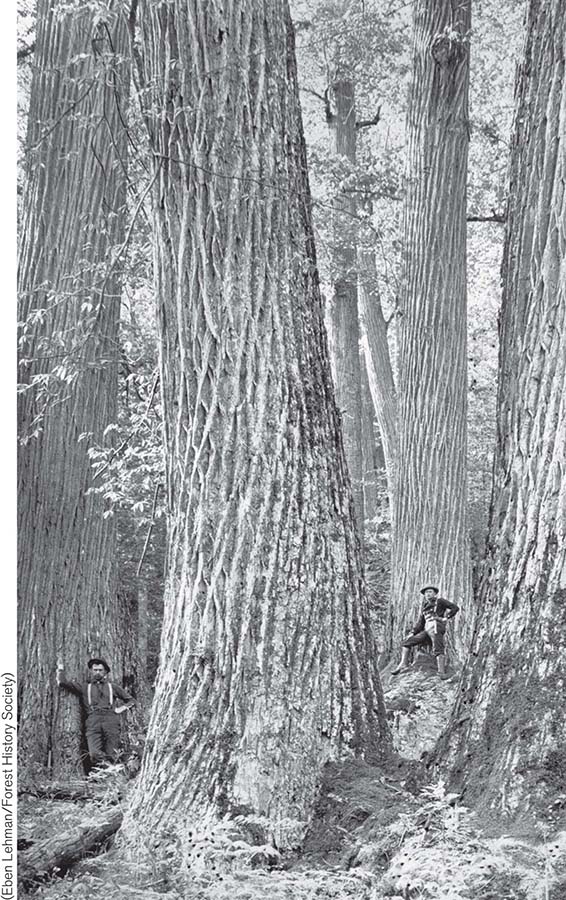
66
In less than 50 years, chestnut blight swept across the American chestnut’s entire natural range, killing nearly 4 billion trees. In most circumstances, only the root systems survived, but here and there large American chestnut trees survived because they either grew in soil and climate conditions unfavorable to the fungus or they possessed genes that gave them some resistance to the blight fungus. In the small population of surviving trees, many have blight-

Was the genetic diversity in the American chestnut population likely to be higher or lower after the chestnut blight fungus swept through the population? Explain.
evolution A change in the genetic makeup of a population as a consequence of one of several different processes, including natural selection and selective breeding.
The increase in frequency of resistance genes relative to susceptible genes in the population is a good example of evolution by natural selection (Figure 3.8). In general, we define evolution as a change in the genetic makeup of a population as a consequence of one of several different processes, including natural selection and selective breeding.

Think About It
What is the most likely reason that Asian chestnut trees were resistant to the chestnut blight fungus when it was introduced to North America, whereas the American chestnut tree was not?
How does genetic variation help a population survive in the face of changing, uncertain environments?